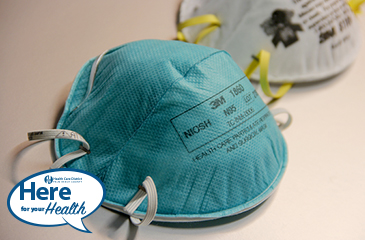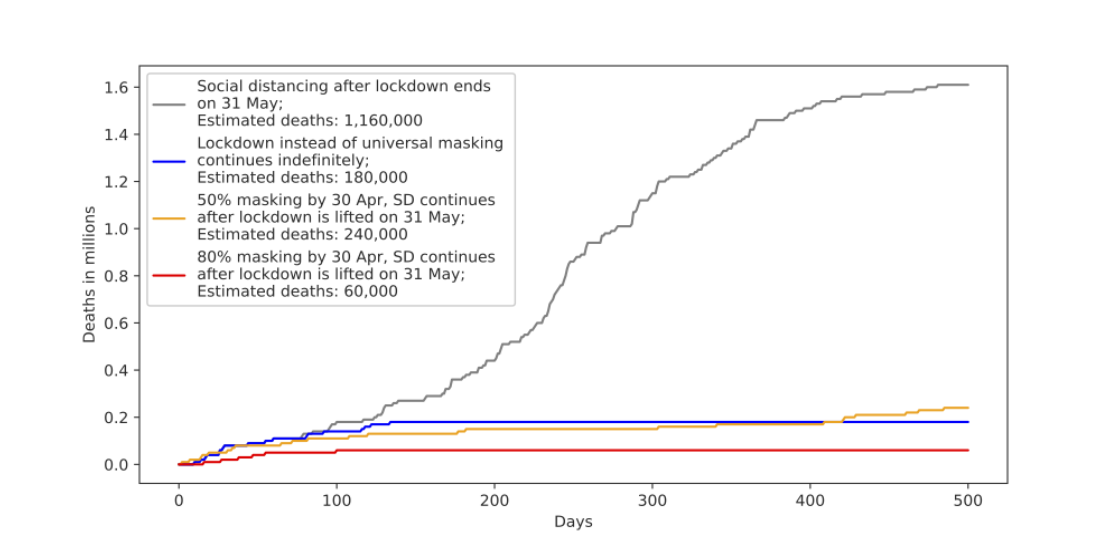HFYH: Do Masks Really Matter?

Do masks really matter? At the beginning of the Coronavirus (COVID-19) pandemic, some of the early messages were that masks really did not make a difference. In fact, the public was advised to save masks for use by the healthcare professionals who were treating Coronavirus patients.
Later, we were told that masks were important, primarily to help people who had Coronavirus from spreading it to others. The high number of people who had Coronavirus without symptoms became one of the strongest points in support of masking.
A recent study entitled Universal Masking is Urgent in the COVID-19 Pandemic by the Population Research Institute found when 80% of the population wears masks in public, meaningful progress is made in stopping the spread of the virus.
The study looked at the effects of mass face mask wearing over time compared to effects of social distancing and lockdown. The researchers modeled four scenarios:
• Lockdown for two months followed by social distancing
• Lockdown for an indefinite period of time
• Lockdown followed by 50% of a population wearing masks in public
• Lockdown followed by 80% of a population wearing masks in public.
The results of the scientific simulation found that a lockdown followed by universal masking with 80% of the population flattens the curve significantly more than maintaining a strict lockdown indefinitely. Having only 50% of the population wearing a mask is not sufficient to prevent continued spread. Replacing the lockdown with social distancing results in unchecked spread.
Figure 1 below presents the findings using the United Kingdom’s population for the period of time beginning March 24, 2020 projected out 500 days.
• The grey line presents the projected results with just social distancing after a lockdown
• The blue line presents the projected results with an indefinite lockdown
• The orange line presents the projected results with 50% masking after a lockdown
• The red lines presents the projected results with 80% masking after a lockdown

The findings have significant impacts for each approach to slowing the spread of COVID-19. Utilizing only social distancing after the lockdown is lifted would result in an increase in the infection rate in the United Kingdom to nearly half of the population. Utilizing an indefinite lockdown brings the virus spread under control after around six months. However, the economic and social costs of a lengthy lockdown would be enormous.
The approach where 50% of the population uses a mask and social distancing significantly slows the spread of the virus, though the number of deaths do continue to climb in the future. The approach where 80% of the population uses a mask and social distancing results in a substantial reduction in the spread of the virus, eventually eliminating it.
To validate the study, the researchers looked at the experience of 38 countries analyzing the growth rate of the virus and the prevalence of mask wearing within the respective countries. What they found is that the lowest growth rates for COVID-19 infections are found in countries with a prior culture of mass face mask wearing, most of whom have also made mask wearing in public mandatory during the epidemic. The researchers noted that the results showed a “near perfect” correlation between early universal masking and successful suppression of the growth rates of infection.
The lesson from this study is that wearing masks in public is important for our own safety, the safety of others and to reduce the spread of the virus. There’s nothing better we can do on our own than to wear masks.